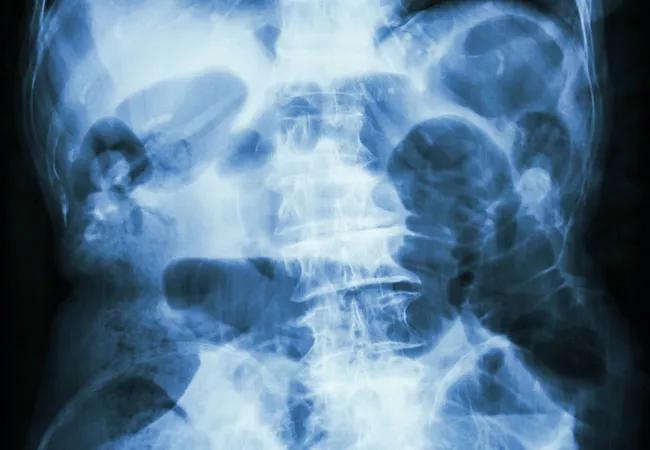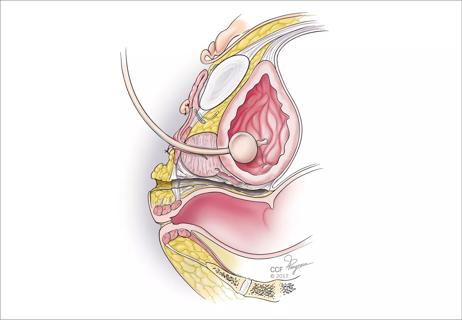New study characterizes the chronicity, management and risk factors for early SBO

Early small bowel obstruction (SBO), defined as an obstruction that occurs within the first 30 days following surgery, is a rare complication of hysterectomy for benign indications, according to a new study. The condition is associated with variables such as wound class, uterine size and perioperative transfusion.
Cleveland Clinic is a non-profit academic medical center. Advertising on our site helps support our mission. We do not endorse non-Cleveland Clinic products or services. Policy
Early SBO warrants special attention. It can be difficult to distinguish between mechanical and nonmechanical obstruction during this period, as the obstruction may be due to adhesions or paralytic ileus.
Based on data from the American College of Surgeons National Surgical Quality Improvement Program (NSQIP) database, this study represents the largest sample of post-hysterectomy SBO in the literature and provides a clearer picture of the timing, management and risk factors for early SBO. “The large numbers from the NSQIP database makes this data very strong and help to clarify risks associated with age, smoking status and prior surgeries,” states Mark Dassel, MD, a gynecologist in Cleveland Clinic’s Ob/Gyn and Women’s Health Institute.
Early SBO occurred at a rate of 5.9 per 1,000 hysterectomies for the cohort of approximately 48,000 patients who underwent hysterectomies from 2014-2016. Dr. Dassel notes, “The low incidence of SBO after hysterectomy is useful to know in order to further educate patient on the risks associated with hysterectomy.”
Patients who developed SBO were more likely to be nonwhite, have a prior history of abdominal or pelvic surgery, to smoke and to have preoperative comorbidities including hypertension and dyspnea. “The association of SBO with hypertension and dyspnea is surprising, though may be related to confounders such as age,” says Dr. Dassel. Additional risk factors for SBO include contaminated wounds, perioperative transfusion, operative time greater than 170 minutes, uterine weight over 250 grams, lysis of adhesions and concomitant appendectomy.
“Furthermore,” Dr. Dassel states, “anything that increases inflammation and thereby scar tissue and adhesions in the pelvis is not surprisingly associated with SBO. The association with lysis of adhesions may have to do with the patient’s innate risk of developing adhesions, or because there is some other sort of inflammatory process at work in the pelvis.”
“I was most surprised that minimally invasive hysterectomy alone was not directly correlated to decreased SBO. Perhaps a larger incision alone is not enough to develop SBO. This may be why the correlation seems to be with risk factors that would lead to a total abdominal hysterectomy instead of the mode of hysterectomy alone.”
In most patients, SBO develops after discharge and can be managed conservatively and without surgery. In the study cohort, there were 123 readmissions, mainly for the management of SBO. Intestinal obstruction was the primary admitting diagnosis for the majority of these patients. Presenting symptoms may include severe bloating, abdominal pain, nausea and constipation.
Only 23% of patients who developed early SBO underwent a second surgery in the 30-day post-operative period. Of these 66 patients undergoing a second surgery, approximately 88% underwent reoperation for SBO management.
“In counseling patients with regards to these findings, I would counsel that SBO is a rare but possible complication of hysterectomy; however, much of this would be associated with some other type of risk factor leading to adhesions/scar tissue in the pelvis,” says Dr. Dassel. “Most hysterectomies can be performed by an MIS approach. The benefits of this in terms of recovery, complications, and length of stay are well documented.”

Deprivation is linked to impaired glucose intolerance and racial disparities

Artesunate ointment is safe well and tolerated patients with vulvar intraepithelial neoplasia

A case-based discussion of efficacy, eligibility and use

Workshop curriculum was valued by some, while others would have preferred time for themselves

Study finds lower incidence of endometriosis than in cisgender patients

Large randomized study compares embryo growth kinetics and live birth rates between culture media

Surgeon experience is key to reducing adverse events

Introducing Laura Detti, MD, newly appointed Chair of the Department of Subspecialty Care for Women’s Health